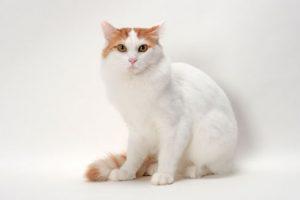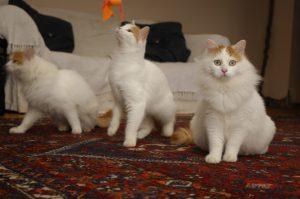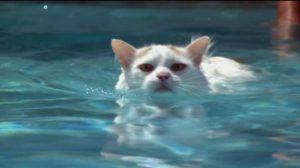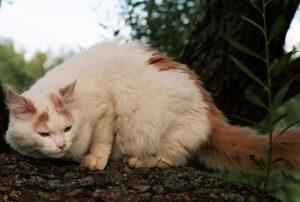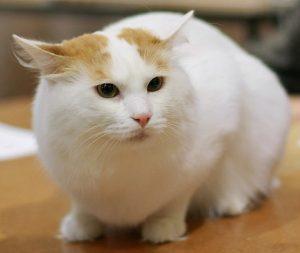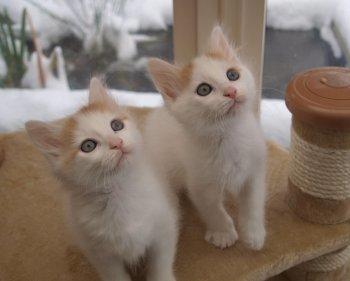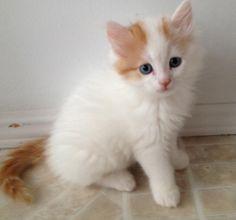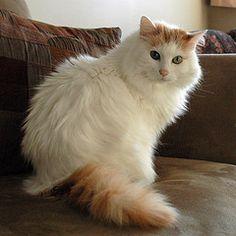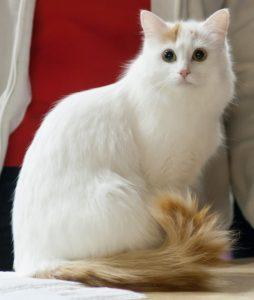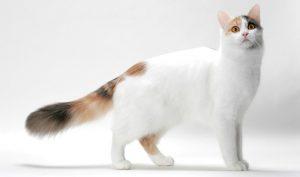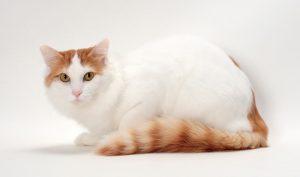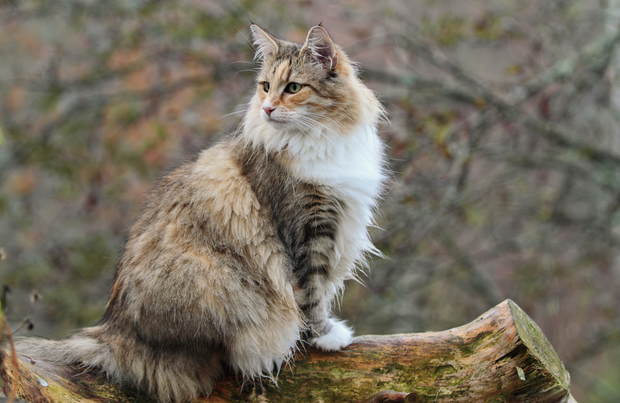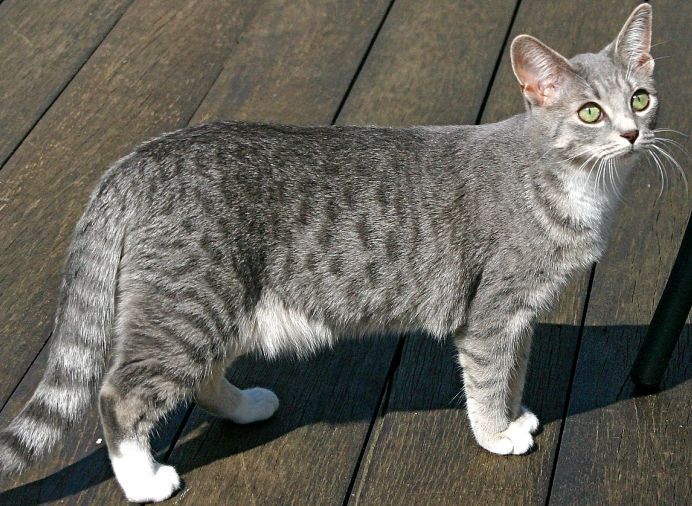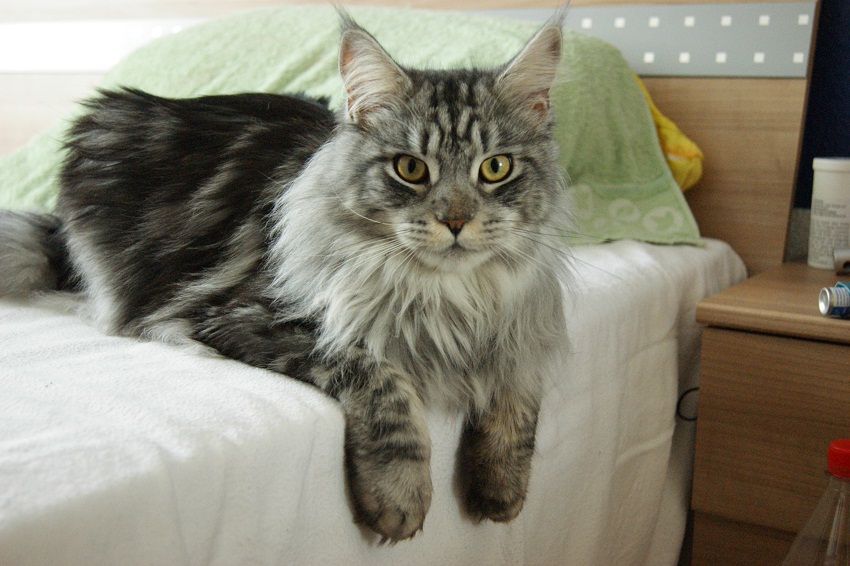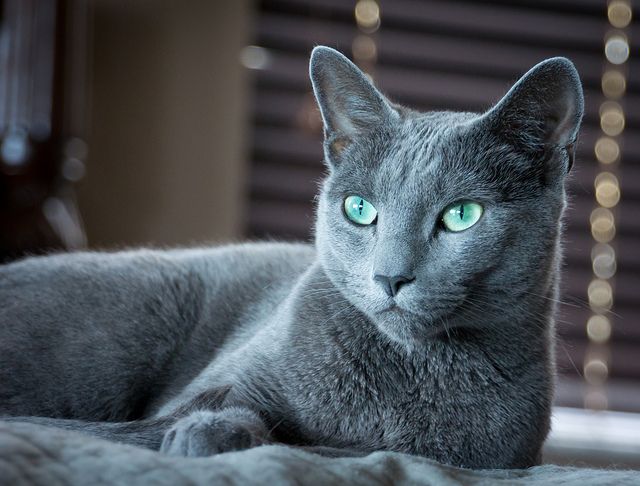Turkish Van
The Turkish Van is an ancient cat breed originating in Turkey and developed in the United Kingdom. This rare breed has the “Van” pattern as its identification mark, with the color being confined to its head and tail, while the remaining part of its body is white. Its striking appearance as well as a pleasing disposition makes it popular as a pet.
Quick Information
Physical Appearance & Size
| Body Type: | Large |
| Physical Description: | Broad shoulders, short neck, heavy at the top, long stature, muscular built, slightly long hind legs, large paws |
| Weight: | Male: 4 – 8.5 kg; Female: 3 – 8.5 kg |
| Height: | Male: 14 – 18 inches Female: 13 – 17 inches |
| Length (Size): | Adults can grow up to 3 feet (nose to tail tip) |
Colors & Patterns
| Coat Type: | Semi-long, Single, Silky, Soft, Glossy, Water repellent |
| Colors/Patterns: | ‘A white body with dark color patches on its head, tail and sometimes even between its shoulder blades. The tail may have a characteristic ‘ringed’ pattern, marked with calico, tabby, black, gray, red, orange, silver, blue, caramel, or lilac |
| Eye Color: | Blue, amber, odd-eyed (called ‘heterochromia’) |
| Tail Type: | Thick, fluffy, bushy; 5cm in length (approx.) |
Other Characteristics
| Other Names: | Turkish Cat (disused) |
| Pronunciation: | ‘tur-kish van’ |
| Life Expectancy (Lifespan): | 15-16 years (average) |
| Characteristics/Qualities: | Athletic, intelligent, loyal, playful |
| Lap Cat: | No |
| Shedding: | Moderate to nominal; seasonal |
| Good with Children: | Good with older children (11+) |
| Good with Pets: | Yes (including dogs) |
| Litter Size: | 2-5 kittens per litter |
| Vocalization/Noises: | Frequent |
| Voice Type: | Low, quiet, sheep-like |
| Hypoallergenic: | No |
| Attention Seeker: | Yes |
| Countries of Origin: | Turkey, UK |
| Availability: | Rare |
| Competitive Registration/Qualification Information: | TICA, CFA, FIFe, AACE, ACF, ACFA/CAA, GCCF Breed Standards |
History and Development
A pair of Turkish cats, Stambul Byzantium (male) and Van Iskenderun Guzeli (female), gifted to Sonia Halliday and Laura Lushington, on their trip to Turkey in the year 1955, formed the foundation stock for this breed.
They brought these cats to U.K. and initiated the breeding process, while two more felines, Antalya Anatolia (female) and Burdur ( male) were further added to the gene pool in 1959. However, the reason for choosing the name seems to be unclear.
They were introduced to the United States in 1982 and given championship status in 1994 by the Cat Fanciers’ Association. After this, an approximate of 100 Vans born every year in the United States were registered by the CFA.
The cats imported to the US are naturally born and have no human intervention in their births. Those that are born in the USA are strictly pure, and their ancestry is directly related to the cats of Laura Lushington, since no other breed has ever been allowed in the process of breeding.
Initially referred to as the Turkish Cat when it was first recognized as a breed in 1969, it was renamed as the Turkish Van in the UK in 1979, to differentiate it from another Turkish cat, the Turkish Angora. In the US, the name was accepted in 1985.
Temperament and Personality Traits
- Unusual affinity for water and swimming
- Takes time to mature
- High level of intelligence
- Sociable and enjoys mingling with people
- Can be specially bonded with its owner
- Not a lap cat but enjoys a close cuddle
- Extremely active and playful
- Loves climbing atop indoor objects and fixtures
- Possesses natural hunting skills
- Highly talkative
Who is the Turkish Van Good for
- People on the look out for intelligent cats to perform various tricks at shows
- Those who desire for a gentle and affectionate cat
- Families requiring a companion cat that would amuse them all day long with its endless chatter and delightful antics
- Households with a big in-house swimming pool, where inmates along with the cat would enjoy a swimming spree.
Care
- Turkish vans shed very less except during spring and fall, the time when they grow a new coat. They do not have an undercoat, and hence, chances of matting and tangling are less. Brush them weekly using a soft slicker brush. But train them how to get accustomed to grooming right from their kitten days.
- Because of their water-resistant coat, bathing might be difficult, though it is needed only when they get dirty. Owing to their love for water, they would certainly cherish the bathing sessions.
- Keep an eye when they are alone, lest they would climb on top of your cupboard or the highest point in your bedroom, and eventually get hurt, or destroy your favorite flower vase.
- Care must also be taken that your Turkish Van stays away from your toilet water. To avoid any mishap, make sure the lid of your toilet is always closed.
Otherwise an extremely healthy cat, the Turkish Van has been reported to have the following health issues:
Hypertrophic Cardiomyopathy: The most common cardiac disease in cats as young as 4 months old to as old as 16 years. The condition results in diffuse or regional thickening of the ventricle walls.
Genetically Transmitted Diseases: Issues like allergies, deafness, PRA, etc. can’t also be ignored.
How Easy is it to Train the Turkish Van
Since they are intelligent and loves attention, it won’t be tough to train the Turkish Vans. They would pick up training fast just to please you and get a little hug for their achievements.
Diet/Feeding
There is no special dietary requirement for this breed. But considering the level of activities, their daily need is about 80 Kcals of food per kg of body weight.
Interesting Facts
- Its love for water earns it the nickname ‘swimming cat’ in Turkey.
- Some Turkish Vans have a color patch between their shoulder blades, which, as per Turkish legend, is the ‘Mark or Thumbprint of Allah’ (or, God).
- When upset, the pink nose of the cat often turns reddish.

